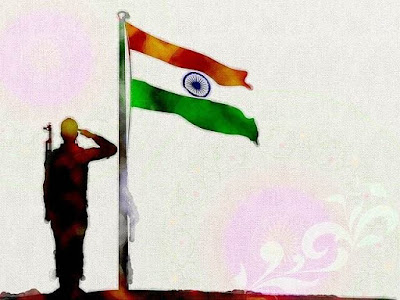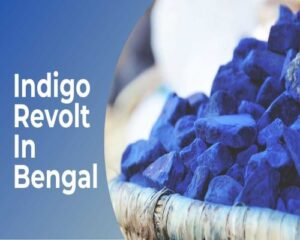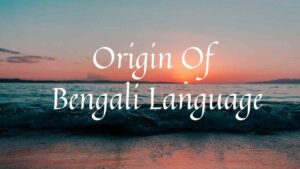It was the turn of the year 1911. King George, the Emperor of India, announced in December that the partition of Bengal would be canceled. Through this, all Bengali spoken districts were once again unified.
Indian National Congress wished to appease the British monarchy in response to the annulment of the Bengal Partition Act 1905. Rabindranath Tagore was requested for a felicitation to the King-Emperor. Tagore never believed in narrow nationalism.
Troubled by this request, patriot Tagore penned down a five-stanza Brahmo hymn in the Bengali language dedicated to the Supreme divine God, whom he represented as the Bharat Bhagya Bidhata(dispenser of the destiny of India). The poem was first publicly recited on 27 December 1911 at the Calcutta Session of the Indian National Congress.
 |
Next year, in January 1912, Tagore published the poem title Bharat Bhagya Bidhata in the official publication of the Brahmo Samaj, Tatwabodhini Patrika.
Rabindranath’s grand-nephew, Dinendranath Tagore, had written down the musical score of Jana Gana Mana in 1918. The melody is sung in the raga Alhaiya Bilawal, and the tivra Madhyama svara is employed.
Outside of Calcutta, Tagore himself sung the song in Besant Theosophical College, Andhra Pradesh, on 28 February 1919. The audience was enthralled, and the vice-principal(wife of Irish poet James Cousins) of the school request the bard to translate the work into English. The college still renders the English interpretation of Jana Gana Mana titled The Morning Song of India as their prayer song.
The Doon School, Dehradun, adopted this as their school song in 1935.
National Anthem Of India in English
Thou art the ruler of the minds of all people,dispenser of India’s destiny.Thy name rouses the hearts of thePanjab, Sind, Gujarat, and Maratha, of the Dravidaand Orissa and Bengal;it echoes in the hills of the Vindhyas and Himalayas,mingles in the music of the Jamuna and Ganges andis chanted by the waves of the Indian Sea.They pray for thy blessings and sing thy praise.The saving of all people waits in thy hand,thou dispenser of India’s destiny.
Victory, Victory, Victory to thee
Why Jana Gana Mana Was Chosen As The National Anthem
During the Indian independence movement, the song Vande Mataram became a popular marching song for political activism. Vande Mataram invokes Hindu deities in some of its verses and elevates the motherland to a divine level. Islam being a monotheist religion, the elevation of any idol or individual to a God-like status did not augur well with Muslims. Also, The book Anandamath, from where the poem was taken, portrayed the British and the Muslim rulers who came before them as enemies. So, Muslims had a general disenchanted towards the song Vande Mataram.
The leaders of the Indian National Army(INA) were aware of this problem and hoped that Subhas Chandra Bose, the head of the INA and the Azad Hind, would settle it. Lakshmi Sahgal, an INA member, arranged a performance of Jana Mana Gana at a women’s meeting attended by Bose.
Bose loved the song and thought that it truly represents the nation. However, he had his apprehensions on the reach of a Sanskritized Bengali song to different communities. So, he commissioned a free translation of the poem to Hindustani(a mix of Hindi and Urdu).
Subhash Chandra Bose, with the help of Mumtaz Hussain, a writer with the Azad Hind Radio and Colonel Abid Hasan Safrani of the INA, rewrote Tagore’s Jana Gana Mana into the Hindustani Subh Sukh Chain in 1943. Netaji declared the song as was the national anthem of the Provisional Government of Free India.
National Anthem India
Jana-gana-mana-adhinayaka jaya he Bharata-bhagya-vidhata
Panjaba-Sindhu-Gujarata-Maratha Dravida-Utkala-Banga
Vindhya-Himachala-Yamuna-Ganga uchchala-jaladhi-taranga
Tava Subha name jage, tava subha asisa mage,
gahe tava jaya-gatha.
Jana-gana-mangala-dayaka jaya he Bharata-bhagya-vidhata.
Jaya he, Jaya he, Jaya he, jaya jaya jaya jaya he
Bimal Roy’s film Hamrahi featured the Jana Gana Mana for the first time on the silver screen in 1945.
The Constituent Assembly of India ratified the choice of Netaji Subhash Chandra Bose and adopted the first stanza of the song Bharoto Bhagyo Bidhata as the National Anthem on 24 January 1950.
The playing time of the national anthem is approximately 52 seconds. A shortened version consisting of the first and last lines is also staged occasionally, and the rendition takes about 20 seconds.
As per the Constitution of India, every citizen must respect the national flag and the national anthem.
However, there is no provision of law that compels anyone to sing the national anthem. It is not considered disrespectful to the nation or the anthem if a person chooses to stand up only in respectful silence.
The song has had its fair share of controversies. Some say it is deferential to the British monarchy. Others feel it fails to reflect India’s races and regions in their entirety. Still, for the past 110 years, Jana Gana Mana is uniting Indians. The national anthem acts as a tool for national integration and instills a sense of patriotism among the citizens.










